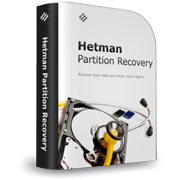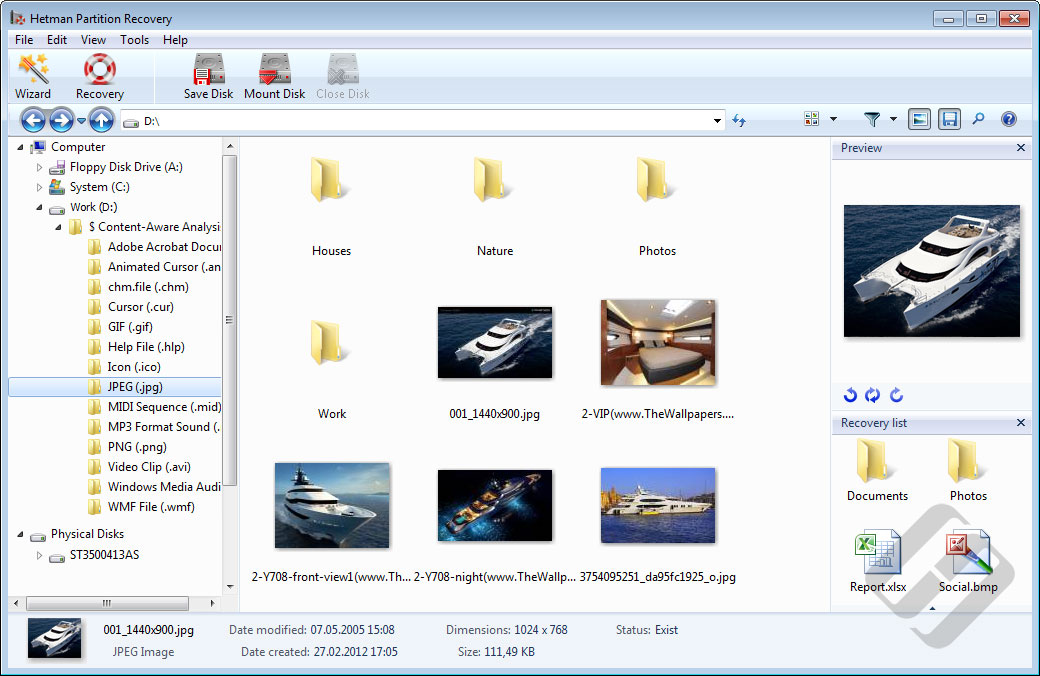 With Windows 10 slowly but inevitably conquering home and office PCs, more and more users are starting to look for a data recovery tool that works with the new OS. Hetman Partition Recovery 2.3 (and all newer versions) is fully compatible with Windows 10, its new system structures and security mechanisms. Let’s have a look at some key technical features of the tool.
With Windows 10 slowly but inevitably conquering home and office PCs, more and more users are starting to look for a data recovery tool that works with the new OS. Hetman Partition Recovery 2.3 (and all newer versions) is fully compatible with Windows 10, its new system structures and security mechanisms. Let’s have a look at some key technical features of the tool.
GPT and MBR Support
In early days of personal computers (at least in Microsoft realm), hard drives were partitioned exclusively with Master Boot Record, or MBR. The MBR was part of the system’s boot process in the days when BIOS was king. In the early years, the boot sequence looked as follows. The computer’s BIOS (a set of programs launched from a chip embedded into the motherboard) would initialize hardware, spin up the hard drive and attempt to load software from the disk. In order to determine where exactly to look for the bootable code, BIOS analyzed partition information that was stored in the Master Boot Record.
This scheme worked like a charm for almost a decade. Later on, the new 64-bit architecture arrived. At about the same time, the capacity of available hard drives grown to exceed 2 TB, which was the maximum partition size of an MBR-formatted disk. A new standard was needed to facilitate the development. BIOS had to give way to UEFI, and MBR was replaced with GPT.
GPT (GUID Partition Table) is a universal standard for partitioning the disk. Technically, it’s part of the new UEFI standard, which was set to replace the ancient BIOS. Natively, GPT is only partially supported in 32-bit versions of Windows 7; however, all 64-bit editions of Windows since Windows Vista have full boot support for GPT-formatted disks. Windows 8, 8.1 and Windows 10 can boot from GPT disks in both 32-bit and 64-bit editions.

When recovering a hard drive, it is important to choose a tool that supports the drive's current partitioning scheme. Hetman Partition Recovery fully supports both MBR and GPT even if you are running the tool on a system that has limited or no support for the given partitioning scheme. As an example, the most common 32-bit edition of Windows XP cannot access GPT-partitioned hard drives, yet Hetman Partition Recovery will still be able to analyze and recover such hard drives without issues.
A unique feature of Hetman Partition Recovery is its ability to work on all BIOS-based and UEFI-based motherboards, allowing you to recover GPT partitions even if the motherboard does not support UEFI.
Needless to say, Windows 10 supports both partitioning schemes, giving preference to the newer GPT as part of the boot process.
Windows 10 Compatibility
Speaking of Windows 10 compatibility, the latest version of Microsoft’s OS implemented a number of changes throughout the system. After all the controversy around Microsoft’s previous attempt, the ill-fated Windows 8, the new Windows 10 appears to be the best Microsoft Windows so far. Yet, the biggest cause of data loss in Windows 10 is Windows 10 itself.
While upgrading to Windows 10 from an older version of Windows, the installation tool attempts to preserve all user data including programs, documents and files. However, in some cases this may not be possible (e.g. upgrading from a 32-bit version of Windows to 64-bit, or vice versa), while in some other cases the transfer is incomplete. Windows 10 is known to remove software without asking, and in some cases it even lock the computer up by causing a bootloop. If something like that happens to you and you lose access to your files, or if your documents get lost during OS migration, you’ll need a data recovery tool to help you get back on track.
Hetman Partition Recovery is designed to help you recover files and folders – even if you cannot boot Windows (in which case you’ll have to attach the hard drive to a different, working system). Even if the files are completely gone, and the disk has a new file system or fresh partition structure, Hetman Partition Recovery can help with signature-based search.
Signature Search
Signature search is a common designation for a range of content-aware data recovery algorithms. With signature search, data recovery tools will look at the actual data instead of just analyzing the file system. Signature search algorithms work similar to anti-virus products. They scan the entire surface of the hard drive or read the entire content of the flash drive or memory card in order to look for identifiable signatures. Once a known signature is encountered (and there are more than a thousand of those in Hetman Partition Recovery’s database), the algorithm will look for the file’s header, analyze it, and attempt to determine the file’s length based on the information obtained from the header.
In some situations, simply analyzing the file’s header is not enough. For example, text or HTML files do not contain information about the length of the file. In these cases, the algorithm will continue reading the disk one sector after another, looking for a data block that does not contain information deemed part of that file. If it’s a text file we’re talking about, the signature-search algorithm (in this case it’s more content-aware than signature-search) will determine the file’s encoding and will scan subsequent sectors to determine whether they contain text in the same encoding. If binary data is encountered, the algorithm assumes it has reached the end of the text file.
For some formats such as Skype databases (and SQLite databases in general) the process is even more difficult, as the database does not have a certain fixed encoding and does not identify the size of the database in the header. For such files, Hetman Partition Recovery will continuously scan subsequent sectors attempting to determine whether they belong to the originally detected file.
In a word, signature search helps recover data located on a failed, corrupted or unbootable disk.
Conclusion
Feature-wise, Hetman Partition Recovery is one of the most complete data recovery tools on the market. The tool supports a variety of magnetic and solid-state devices including all types of hard drives, SSD drives, USB pen drives, memory cards regardless of make and model, and a few exotic storage devices you aren’t likely to see in real life. The product is actively developed and continuously updated with support for the latest versions of Windows. You can download the free version of the tool at http://hetmanrecovery.com/hard_drive_recovery/software.htm
Add new comment